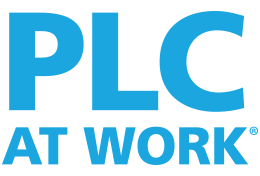DEMOGRAPHICS
Golden Hills Elementary School is a public school serving fourth and fifth grade in Butte County, California.
263 students
- 79% free and reduced lunch
- 13% multilingual learners
- 9% special education
THE CHALLENGE
The professional learning community (PLC) journey began at Golden Hills Elementary School more than six years ago. Due to multiple natural disasters during those years, including fires and a citywide evacuation from a possible dam leak, Golden Hills’s fourth and fifth graders had rarely seen a full year of school. Their current system of operation was failing more than 70% of their students. And in the 2021–2022 school year, out of the fourth-grade students who entered Golden Hills, only 4% were at grade level.
“We haven’t had a normal school year since 2017, because we’ve missed school from either natural disasters or the pandemic. Our students had a lot of holes that we wanted to address right when they came in and not just hope that we were getting it. We wanted to make sure we were targeting what we need them to know,” said principal Kristi Napoli.
Before the 2020 pandemic, Golden Hills had PLC practices in place, but Napoli realized they were really only practicing “PLC lite.” Many of their educators were not trained in the model, and shortly after they began incorporating PLC into their system, their school like the rest of the world switched to a virtual/hybrid setting, creating new struggles for their teachers. Napoli wanted better for their students and for the educators at Golden Hills Elementary School.
“I really wanted to dive back into the PLC process, because I know it works. It was time to eliminate excuses and become high-performing collaborative teams with a focus on student learning...”
IMPLEMENTATION
Golden Hills Elementary School switched its focus to the four critical PLC questions in all areas: academics, behavior, and social-emotional needs. Teachers began targeting the instruction of the essential standards in homeroom classes and holding all students to high expectations. All students would receive instruction and have the same opportunity (and expectations) to learn grade-level essential standards. Common formative assessments were developed and given to students to assess their understanding.
When funding permitted, the campus brought in PLC coach Anthony Muhammad, who propelled the team forward. His expertise helped the team collaborate to design common formative assessments and analyze data to develop timely, targeted interventions and extensions.
“Having researched and planned intervention into our daily schedule, we were ready to address our students’ individual needs through a multitiered system of supports. We knew we didn’t have time to waste because we only had them for two years. So we really wanted to spend our time ensuring they learned what we needed them to learn before they left us,” reflected Napoli.
Golden Hills also developed two daily 35-minute intervention blocks to provide timely, targeted interventions in math and English language arts. During this time, students receive instruction in the area focused on their individual needs; this is done through re-teaching or through the extension of the standard. The team became creative in their schedule to allow students to get the support they needed while not missing new essential content.
Golden Hills is a Positive Behavioral Interventions and Supports (PBIS) school. They’ve implemented monthly PBIS meetings where they evaluate school data and look at areas of concern and needs for behavioral reminders or re-teaching.
“It was switching our mindset and getting the staff to realize it’s not just PLC time on Friday afternoon . . . We are PLC all the time,” Napoli explained.

Golden Hills Elementary School staff are all smiles with their PLC coach Anthony Muhammad.

Golden Hills Elementary School students celebrate their accomplishments.
RESULTS
Over the last three to four years, Golden Hills Elementary School has gone from a place with high disciplinary referrals and below-average grade levels to one where student success and well-being are the primary focus.
Using the PLC process, Golden Hills doubled its percentage of growth in math. Their numbers went from an 11% growth of students being on grade level in the 2019–2020 school year to a 28% growth rate of students being on grade level in the 2021–2022 school year.
On the behavioral side, Golden Hills student referrals also decreased by 50% from 2021 to the 2022 school year.
“Our percentage of growth from the beginning of the year to the end of the year is higher than it has been in the past. With the pandemic, the students were entering our school with higher academic needs. The data we are collecting shows the students are successful at the essential standards,” Napoli expressed.
Golden Hills Elementary School has earned the PBIS Silver Award for the 2019–2020 school year, the PBIS Platinum Award for the 2020–2021 school year, and the PBIS Gold Award for the 2021–2022 school year.
“The team holds each other accountable for being positive, looking at our successes, and building off of our strengths. We’re not quite where we want to be yet academically, but we’re on our way, and because we’re looking at those strengths, that makes the teachers and the staff want to continue putting in the effort.”
Percent growth in students performing at grade level in mathematics

WHY PLC AT WORK®?
Professional learning communities are schools that empower educators to work collaboratively in recurring cycles of collective inquiry and action research to achieve better results for the students they serve.


